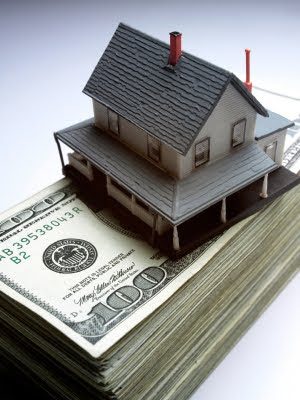 |
 |
“All men make mistakes, but only wise men learn from their mistakes.” – Winston Churchill
A Guest Post by Robert Sommers from Trinity Insight .
 For most Americans, purchasing a house requires taking on a mortgage loan. A Mortgage can be a very complex and costly financial investment and in order to avoid making common mortgage mistakes a borrower should be reasonably knowledgeable before committing to a contract
For most Americans, purchasing a house requires taking on a mortgage loan. A Mortgage can be a very complex and costly financial investment and in order to avoid making common mortgage mistakes a borrower should be reasonably knowledgeable before committing to a contract
Choose Your Lender Carefully
Choosing a lender that you trust and are comfortable with is a lot more important than picking the one that offers the lowest interest rate. Unscrupulous lenders have no problems in offering attractive rates to draw customers in and then surprise them with hidden costs later on in the life of the mortgage. That “no fees, no down payment mortgage” at first glance may look great, but it often times comes at the cost of higher interest rates and hidden fees. Choosing a reputable lender will ensure that you don’t get any unpleasant surprises down the road.
Research your Options
When looking around at different mortgages (ARM, FHA, HELOC, reverse mortgage, etc) and mortgage rates it is especially important to consider the length and structure of the mortgage.
While in today’s turbulent housing climate it is generally recommended that you obtain a conventional 30 year fixed rate mortgage due to its safety and reputation as being the mortgage that is least likely to cause problems in the future, in certain situations going with an adjustable rate mortgage can provide numerous financial benefits for borrowers. The value of an adjustable rate mortgage largely depends on how long you plan to own your home. Adjustable rate mortgages are far more valuable in the short term rather than in the long run. Currently, Five-year adjustable-rate mortgages are averaging 4.59% and one year adjustable-rate mortgages at 4.62% with both rates at a 3-month low. If you don’t plan on living in your home for more than six years, it is usually a good idea to opt for an adjustable rate mortgage, as the interest rate will generally be lower than a fixed rate mortgage over the period of your occupancy. However, check to make sure that your mortgage agreement does not contain a penalty for prepayment or negative amortization in which case the unpaid interest would be added to the balance of your loan.
Check for Hidden FeesAll lenders are required by law to supply a mortgage applicant with a Good Faith Estimate within three days of processing their application. Once you receive your estimate carefully check it for hidden fees that can often add several hundred dollars to your closing costs. Hidden costs are not always explicitly disclosed on a Good Faith Estimate and you often times have to read between the lines to find them. Lenders are always coming up with new names for unnecessary costs that they furtively charge to unsuspecting borrowers. These costs may include money for payment of overnight document delivery, and document processing fees that often are many times not necessary.
Locking in an Interest Rate
The lock-in period should also be taken into consideration when looking at a particular mortgage. The lock-in period is the amount of time for which the quoted points and interest rate are guaranteed. This period is typically 30, 45, or 60 days, with higher loan fees applied to the longer lock-in periods. Waiting to lock in your rate is often advantageous, but it also comes with significant risk. You don’t want to be stuck with a higher interest rate than you can’t afford because you waited too long to close in. If you decide to wait to lock in an interest rate on your mortgage, it is important that you watch the mortgage market very closely.Also, borrowers often assume that interest rates they are quoted by lenders are set in stone. This is not always the case and if you are looking to borrow money from a particular lender, you should always inquire as to whether they can give you a lower rate than what they originally quoted you. If successful, this tactic can result in a lower annual percentage rate (APR) and a significant amount of savings in the long term.
Closing Costs
In most cases, closing costs will come out to be between three and six percent of the appraised value of the purchased property- or $3,000 to $6,000 for every $100,000 of the property’s value. Most of this money is payable in cash due at the time of closing, however some fees, such as your loan application fee and appraisal fees for the property, must be paid before closing.You will also be required to pay, in cash, the pre-paid interest on the first payment of your mortgage. This sum covers the interest that accrues from closing until the end of the month in which closing occurs. By closing at the end of the month you will effectively reduce the amount of pre-paid interest that accumulates meaning that you won’t need to come up with as much cash at closing time. Robert Sommers is a freelance mortgage and real estate writer located in Baltimore. He has worked for over 25 years as a licensed real estate agent in all areas of commercial and residential real estate.
Image Credit: Sayeducate
 About Guest Writer
About Guest Writer
This post was written by a guest writer. If you’d like to add a guest post in Money Hacker, please check out Write for Us page for details about how YOU can share your knowledge with our community.

